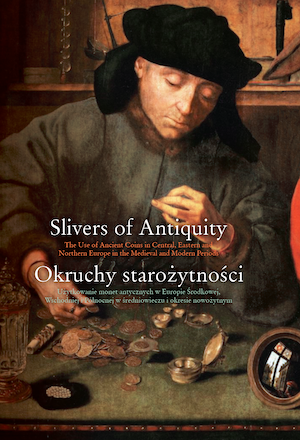THE “SECOND LIFE” OF ANCIENT COINS IN EASTERN EUROPE IN THE MIDDLE AGES AND THE MODERN PERIOD / „DRUGIE ŻYCIE” ANTYCZNYCH MONET W EUROPIE WSCHODNIEJ W ŚREDNIOWIECZU I NOWOŻYTNOŚCI
THE “SECOND LIFE” OF ANCIENT COINS IN EASTERN EUROPE IN THE MIDDLE AGES AND THE MODERN PERIOD
Author(s): Kyrylo V. Myzgin
Subject(s): Anthropology, Archaeology, Cultural Anthropology / Ethnology
Published by: Wydawnictwa Uniwersytetu Warszawskiego
Keywords: denarius; Eastern Europe; Kievan Rus; Golden Horde; den’ga; hoard
Summary/Abstract: The study of ancient coin finds recorded in Eastern Europe in later contexts is a relatively new research problem for this territory. In fact, this publication is the first attempt at a general analysis of this issue. The catalogue of finds contains twenty nine find spots, of which twenty four may be considered reliable. The smallest number of coins dates from the early medieval period. Not a single ancient coin was recorded in a context dated to the Pre-Kievan Rus’ Period (6th–9th centuries), and only three to the period of Kievan Rus (9th–13th centuries), all of them recovered in the north-western territories of Kievan Rus’). Consequently, there is no evidence to uphold the hypothesis of V. Yanin on the derivation of the early Rus’ weight system from the weight standard of the Roman denarius. The late medieval context is represented by thirteen reliable find spots, most of them associated with the Golden Horde hillforts of the Volga region. There is much to suggest the reuse of Late Roman copper coins within the population of the Golden Horde period. Another interesting subject is the possible influence of the iconography of Roman coins on the emergence of some types of late medieval Russian coins. Finally, eight reliable finds have yielded ancient coins found in a modern period context. Most of them are Roman denarii. Their similarity in size with the main 16th–17th century silver denominations of Europe may be treated as evidence that some of them participated in the local monetary circulation. On the other hand, the discovery of ancient coins, made into jewellery or as collectibles, suggests that the possession of a Roman coin also played a prestigious role at this time.
- Page Range: 113-158
- Page Count: 46
- Publication Year: 2020
- Language: English, Polish
- Content File-PDF

